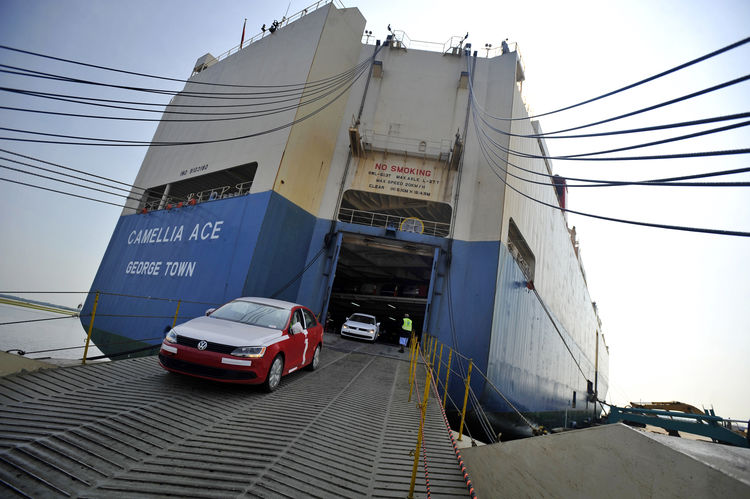What a week we have in store and equity markets are off to another strong start as investors brush aside downside economic risks this winter.
Once again we’re seeing the resilience of investors in action. This week we have a plethora of central bank decisions, the highlight of which will obviously be the Fed on Wednesday, as well as a wide array of economic data and, let’s not forget, more information on the Omicron variant and the risks it poses in the coming months.
The bulk of this week’s event risk is loaded into the second half of the week but there’ll clearly be no shortage of action before then as we’re already seeing. It may just be that there’s heightened focus on Omicron and the measures leaders are taking to get to grips with it and prevent a more severe crisis in the coming weeks.
UK getting nervous about Omicron as over 30s encouraged to get booster
We’re already seeing the effect the new variant is having here in the UK, with more restrictions being imposed and the government urging people 30 and over to get the booster. Suddenly it’s a scramble to get boosted, so much so that we’re seeing long queues outside vaccinations centres and, as I’ve experienced the last 24 hours, a booking website completely incapable of handling the surge in numbers.
The economy was already facing numerous headwinds this winter and the clear concern coming from the top is only going to filter down and be a drag at an important time for many businesses. With the Prime Minister refusing to rule out further curbs before Christmas and his credibility at a low following recent leaks, who knows what the coming weeks will hold. The hope is that the late dash for the booster will be enough to save Christmas this year.
All considered it’s hardly surprising that market pricing for a rate hike from the BoE this week has plunged. The MPC was slaughtered last month for overwhelmingly voting against raising rates after misleading investors in the weeks leading up to the meeting. This time investors are clearly focused more on the rational argument for hiking, which in the current environment, there isn’t much of. February makes much more sense.
Lira plunges against ahead of CBRT on Thursday
I obviously understand why the Fed is the headline event this week but it’s the CBRT I’m most looking forward to. The central bank and government are signing from the same hymn sheet but living on a different planet from the rest of us. Inflation is above 21% and yet interest rates are expected to fall by another 100 basis points on Thursday to 14%, totaling a cut of 500 basis points since September.
A fourth intervention in the currency markets after the dollar rallied above 14 against the lira at the start of the week on the back of the S&P outlook downgrade will prove to be about as successful as the rest. The lines aren’t even blurred between government and central bank anymore, as evident in remarks by Finance Minister Nureddin Nebati on Sunday, when he claimed: “we won’t raise the interest rate”. That makes for an interesting rate decision on Thursday, but unfortunately further pain for Turkish businesses and households for many months to come.
Apple ticking all the boxes
Apple is closing in on a $3 trillion market cap in what would be another landmark moment for the company, coming a little over a year after hitting $2 trillion and three years after $1 trillion. It really is an incredible achievement and just begs the question, how long until it hits $4 trillion? They have a fantastic product lineup and so much to offer in the coming years. It’s had its doubters at times over the years, particularly on the innovation side, but it appears to be ticking all the boxes at the moment.
Oil stabilizes as we await more Omicron data
Oil prices appear to have stabilized over the last week after roaring back from their Omicron-induced losses. OPEC+ put a floor under the price for now as the group warned of sudden adjustments in output but ultimately, the price will only hold up as long as investors continue to believe Omicron poses no substantial threat. Leaders appear more concerned than investors at the moment which is always a worry, but with oil prices 15% off their October highs, there does appear to be some caution priced in at these levels.
Gold range-bound ahead of the Fed
Gold is seeing some support for a second day but remains below $1,800 and within the range it’s traded broadly within over the last few weeks. If it can break above $1,810 it may pick up some momentum to the upside but I struggle to see that ahead of the Fed decision on Wednesday. Then it’s a question of what gold bulls will want to see from the meeting. No taper acceleration? Pushback against rate hikes? Transitory being brought out of retirement? I’m not sure we’ll see any of these.
Bitcoin struggling once more
Bitcoin is back below $50,000 and really struggling to find any bullish momentum when the price does rebound. An improvement in risk appetite hasn’t even helped the cryptocurrency which could be facing a move back towards the levels seen during the flash crash earlier this month if $47,000 falls. Perhaps central banks collectively paring back tightening expectations will get the crypto community excited again this week.










